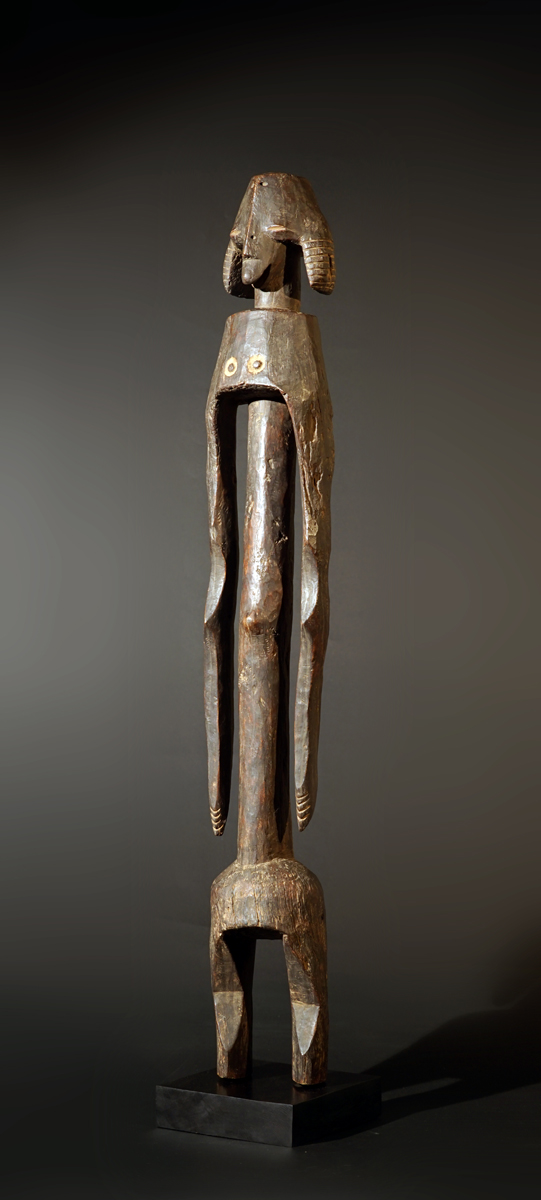|
A female Mumuye sculpture, Nigeria, standing on fragmentary, wedgeshaped feet, the right arm was broken and unprofessionaly repaired, an agecrack in the middle of the torso and on the right side. Large, hanging ears trapezoid and pierced through, on top a stylized vessel in conical form; heavy, hard wood with blackened surface, incl. stand. Until the 1970s most Mumuye sculpture was misattributed to their neighbors the Chamba. With no royal system, the Mumuye are organized by age classes and choose a village chief who is assisted by a council of elders. The vabong secret society regulates Mumuye religious life. Entry into the society is achieved through initiation ceremonies. The initiation of boys begins at the age of ten and takes place in a tsafi hut, where the statues are kept. Even though the Mumuye show great respect for the sculls of the ancestors, their statuary does not depict ancestors, but rather incarnates tutelary spirits. Yet, statues reinforce the status and prestige of their owner who, as he holds them in his hands, has a dialogue with them and thus ensures his personal protection. The functions of sculptural figures are varied. They were used by both diviners and healers, whose professions included diagnosis and cure of ill health and other kinds of misfortunes. The figures were used to greet rainmaker's clients, guard the house, serve as owner's confidant, and in trials when men in dispute swear on the statue, which they must kiss. Elders used them to reinforce their status in society. It was not unusual for a figure simultaneously to serve two or more functions. The size of statues varies from 20 centimeters to 1.6 meters. Mumuye figures are highly abstracted, perhaps in part because they invoke forms of human and supernatural authority. The statue may have added elements: beads, belts, bracelets, chains, leather laces, ropes or braided vegetable matter, brass wires, or cowrie shells. The statues’ principal characteristic, unique in African art, is the openwork between the body and the arms, which forms a scroll or a spiral around the slender, cylindrical bust. The legs are usually angular, and ribbon-like arms wrap around the torso with elbows clearly marked. The heads may display a coiffure in the form of a crest. Scarification on face and body is delineated and nasal septum may be perforated for the insertion of a short section of a stalk of Guinea corn. A number of such sculptures have large ears with pierced and distended earlobes for the insertion of plugs. The Mumuye distinguish the gender of the figures on the basis of the shape of the ears; only Mumuye women distend their earlobes. This may be the only clue to determining the gender of a figure in the older examples. 800 - 1.000,- Euro Height: 112 cm |
 photo: wolfgang-jaenicke.com, for more information, please write us an e-mail with the identification number of the photo identification no. CSC01515.jpg |